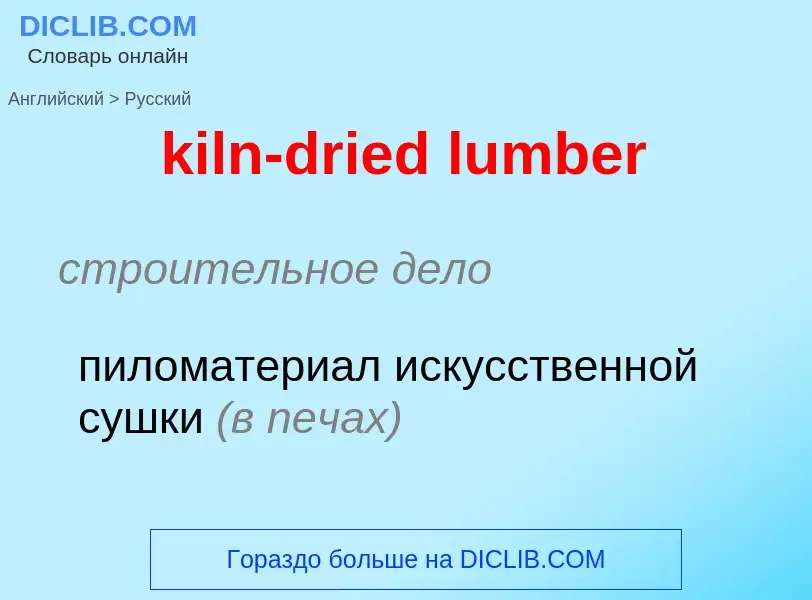Translation and analysis of words by ChatGPT artificial intelligence
On this page you can get a detailed analysis of a word or phrase, produced by the best artificial intelligence technology to date:
- how the word is used
- frequency of use
- it is used more often in oral or written speech
- word translation options
- usage examples (several phrases with translation)
- etymology
kiln-dried lumber - translation to russian
строительное дело
пиломатериал искусственной сушки (в печах)
общая лексика
сухая древесина
строительное дело
выдержанный (высушенный на воздухе) лесоматериал
Definition
Wikipedia
.jpg?width=120)
Wood drying (also seasoning lumber or wood seasoning) reduces the moisture content of wood before its use. When the drying is done in a kiln, the product is known as kiln-dried timber or lumber, whereas air drying is the more traditional method.
There are two main reasons for drying wood:
- Woodworking
- When wood is used as a construction material, whether as a structural support in a building or in woodworking objects, it will absorb or expel moisture until it is in equilibrium with its surroundings. Equilibration (usually drying) causes unequal shrinkage in the wood, and can cause damage to the wood if equilibration occurs too rapidly. The equilibration must be controlled to prevent damage to the wood.
- Wood burning
- When wood is burned (firewood), it is usually best to dry it first. Damage from shrinkage is not a problem here, as it may be in the case of drying for woodworking purposes. Moisture affects the burning process, with unburnt hydrocarbons going up the chimney. If a 50% wet log is burnt at high temperature, with good heat extraction from the exhaust gas leading to a 100 °C exhaust temperature, about 5% of the energy of the log is wasted through evaporating and heating the water vapour. With condensers, the efficiency can be further increased; but, for the normal stove, the key to burning wet wood is to burn it very hot, perhaps starting fire with dry wood.
For some purposes, wood is not dried at all, and is used green. Often, wood must be in equilibrium with the air outside, as for construction wood, or the air indoors, as for wooden furniture.
Wood is air-dried or dried in a purpose built oven (kiln). Usually the wood is sawn before drying, but sometimes the log is dried whole.
Case hardening describes lumber or timber that has been dried too rapidly. Wood initially dries from the shell (surface), shrinking the shell and putting the core under compression. When this shell is at a low moisture content it will 'set' and resist shrinkage. The core of the wood is still at a higher moisture content. This core will then begin to dry and shrink. However, any shrinkage is resisted by the already 'set' shell. This leads to reversed stresses; compression stresses on the shell and tension stresses in the core. This results in unrelieved stress called case hardening. Case-hardened [wood] may warp considerably and dangerously when the stress is released by sawing.

.jpg?width=200)
